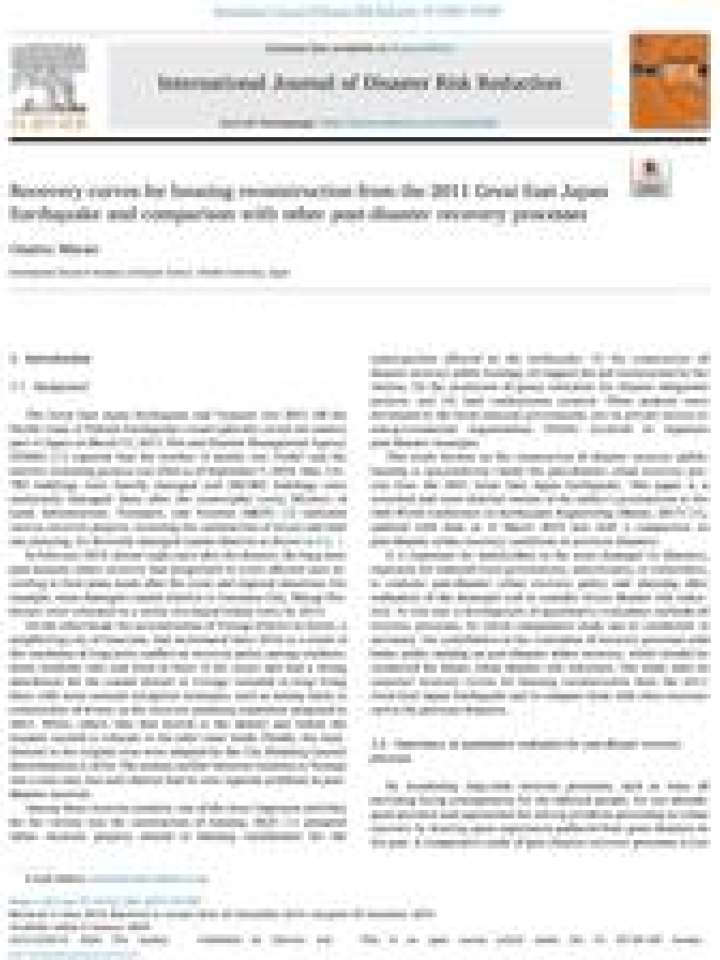Recovery curves for housing reconstruction from the 2011 Great East Japan Earthquake and comparison with other post-disaster recovery processes
The Great East Japan Earthquake and Tsunami catastrophically struck the eastern part of Japan on March 11, 2011. Fire and Disaster Management Agency reported that the number of deaths was 19,667 and the number of missing persons was 2566 as of September 7, 2018. Also, 121,783 buildings were heavily damaged and 280,965 buildings were moderately damaged. Soon after the catastrophic event, Ministry of Land, Infrastructure, Transport, and Tourism indicated various recovery projects, including the construction of levees and land use planning, for diversely damaged coastal districts.
In February 2019, almost eight years after the disaster, the long-term post-tsunami urban recovery had progressed in every affected area according to their plans made after the event and regional situations. For example, some damaged coastal districts in Iwanuma City, Miyagi Prefecture were relocated to a newly developed inland town by 2014.
On the other hand, the reconstruction of Yuriage District in Natori, a neighboring city of Iwanuma, had accelerated since 2016 as a result of the resolution of long-term conflict on recovery policy among residents. Finally, the resettlement in the original sites were adopted by the City Planning Council determination in 2016. The serious conflict between residents in Yuriage was a rare case, but each district had its own regional problems in post-disaster recovery.
Among those recovery projects, one of the most important activities for the victims was the construction of housing. MLIT prepared urban recovery projects related to housing resettlement for the municipalities affected by the earthquake: (1) the construction of disaster recovery public housing, (2) support for self-construction by the victims, (3) the promotion of group relocation for disaster mitigation projects, and (4) land readjustment projects. These projects were developed by the local/national governments, not by private sectors or non-governmental organizations (NGOs) involved in Japanese post-disaster strategies.
This study focuses on the construction of disaster recovery public housing to quantitatively clarify the post-disaster urban recovery process from the 2011 Great East Japan Earthquake. This paper is a reworked and more detailed version of the author's presentation at the 16th World Conference on Earthquake Engineering, updated with data as of March 2019 and with a comparison to post-disaster urban recovery conditions in previous disasters.
Explore further
